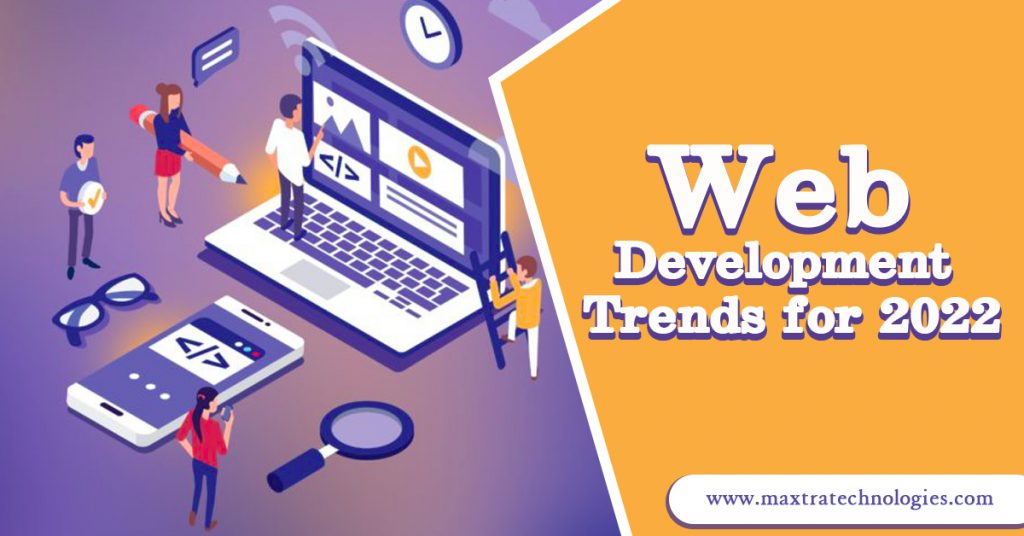
Additionally, web designers and firms are now in disarray due to another major shift. Page Experience is a Google algorithm change that prioritizes user experience when assigning rankings to websites. It went live in May of this year.
This is critical, and it cannot be overstated. So site designers now have to focus more on things like loading speed, interaction, security, and aesthetic stability. If they don’t, their websites will soon fall off the first page of Google.
Continue reading to discover the latest web design trends, as well as some real-world examples of how you might use them in your own work through a web development company that provides web development service.
Fun and Being Upbeat
Minimalist interfaces predominated in online and app design during the decade of the 2010s. For a while, this made logical. Because the iPhone debuted in 2007 and the iPad in 2010, the majority of people had just recently discovered the internet. We wanted to make using, understanding, and navigating digital services simple.
This had the unfortunate side effect, as many online pioneers have noted, of dampening down the early web’s more fun and adventurous side. There’s room for a return to some of the digital channels now that they’re known to the majority of people.
After all, the epidemic has lasted almost two years and has caused unprecedented disruption in our lives. I mean, aren’t we all due for a good time?
A web development company that provides web development service seems to be in agreement based on the newest websites. There’s a lot of visual optimism in website design right now: bright colors, fun features, outrageous font, a lot of upbeat messages, and engaging interaction. To ease us back into “regular” life and divert our attention from more pressing concerns, this method is refreshingly lighter and surprising.
Web Design That Takes Your Thoughts Into Consideration
Lockdown meant that your world became smaller, simpler, and quieter for the majority of people across the globe. While the web as a whole is still a noisy, hectic, and stressful environment, you may find instances of controlled serenity in web design.
White space is being used more liberally by a web development company in their web development service, which gives our eyes and the material a chance to breathe. This technique is known as “mindful web design” because it recognizes that consumers don’t want to be bombarded with too much information or distracting visual elements.
Fortunately, this tendency aligns with Google’s latest algorithm change, which says that having your website load quicker helps your search engine results. It’s a win-win scenario since the simpler your design is, the less information there is to load.
This web development service coincides with Google’s insistence that websites be responsive (mobile-friendly). Making websites that function effectively across a wide range of devices is becoming more difficult in a world where people use a dizzying variety of gadgets. However, the simpler your design is, the easier it is to implement in reality.
Earthy Tones In a Muted Palette
While the lockdown lifestyle has limited our choices, it has also reacquainted many of us with the beauty of the natural world. We walked out of the house, whether it was for a climb up a mountain or a stroll around the neighborhood park, and into the wide outdoors. This newfound connection to the environment is also having an effect on modern web design.
Designers are using subdued, peaceful, and earth tones for backgrounds and graphics all over the web. It’s a nod to how much time we spend staring at screens these days, giving us something relaxing to look at.
Designing modestly through a web development company makes it simpler to look at and less taxing on the eyes. If you want to improve the amount of time people spend on your website, try following this advice.
Google’s new algorithm, which again follows a less-is-more approach, may benefit from this technique in certain instances. But it’s also a reference to our increased social consciousness about the environment and our role in it.
Designing in Three Dimensions and Using Multimedia
As new technology emerges, so do new web design trends, and this is no different today. The newest displays have a greater detail resolution than ever before, and it is having a significant impact right now.
From HD to 4K (four times the pixel density) and beyond, 4K has become the new benchmark for image quality. Additionally, 4K+ displays and laptops are flooding the market, with some even coming in at a 6K or 8K resolution. In order to meet this demand for visual detail, broadband and mobile data rates are also increasing.
There are a growing number of websites that are using dynamic content in addition to text and static pictures. Instead, a web development company that provides web development service is eagerly embracing 3D design, animation, AR, VR, and large-scale video and images, as well as interactive elements, to make their websites more engaging and interesting.
That being said, all ethical web designers should also be conscious of the roughly one billion individuals who do not have an excellent connection or the most up-to-date gadgets (both abroad and here in the UK). This means that all designs must be based on incremental improvement, so that the greatest possible experience may be delivered to each individual user regardless of their device’s capabilities.
ScrollyTelling
Social media is often blamed for dumbing down ideas and knowledge by condensing them into soundbites that don’t engage the brain and, at worst, promote disinformation and conspiracy theories in the public mind. That being said, there are plenty of other places on the internet where you can get well-written articles that are balanced and thought-provoking. Why don’t people just read them themselves?
ScrollyTelling, or “story visualization,” is a prominent web design trend right now. Using this kind of design, you’ll receive delightful visual delights while you read a lengthy post, such as beautifully typeset columns and whimsical inset pictures, as well as subtle animations.
Like reading a paper magazine, but with animated graphics and all the interaction of the web, it’s a whole lot more fun and engaging.
Naturally, the only way to understand this craze is to go out and experience it for yourself. Apple’s official AirPods Pro website is a wonderful place to start since it incorporates the trend in a stylish and understated way. In this minisite, the hero picture gradually transforms from darkness to light as you scroll down the page. It’s a basic effect, but it’s very effective.









